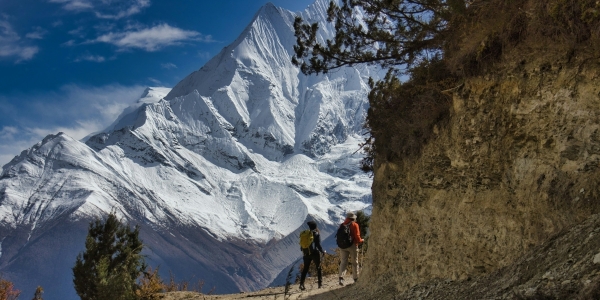Nepal, renowned for its majestic peaks and trekking adventures, offers a plethora of trails that cater to adventures from around the globe. Among the lesser-known, yet profoundly captivating treks is the Limi Valley Trek. Nestled in the remote north-western corner of Nepal, this trek offers a unique blend of pristine natural beauty, rich cultural heritage and a touch of mysticism. Here’s a detailed guide to the Limi Valley Tre, designed to provide you with everything you need to know for this extraordinary journey.
Overview of Limi Valley Trek
- Location: Humla District, Karnali Zone, Northwestern Nepal
- Trek Duration: 18-20 days
- Maximum Altitude: Nyalu La Pass at 4,990 meters(16,371feet)
- Difficult Level: Moderate to Strenuous
- Best Season: May to September
Getting There
The journey to Limi Vally begings with a flight from Kathmandu to Nepalganj, followed by another flight to simikot, the administrative center of Humala Districe, Simkot, situated at an altitude of 2,910 meters (9,547 feet), serves as the starting point of the trek.
Trek Highlights
- Simikot to Dharapuri: The trek kicks off with a descent to the Humla Karnali River and continues through terraced fields and small villages. The trail is lined with apricot orchards, a local specialty.
- Dharapuri to Kermi: This segment offers the first glimpse of the Tibetan culture that permeates the region. You will pass through lush forests, traditional villages, and have the opportunity to relax in natural hot springs at Kermi.
- Kermi to Yalbang: The trail follows the Karnali River, leading to the historic Yalbang Monastery, one of the most significant spiritual centers in the region. Here, you can interact with the monks and learn about their daily routines.
- Yalbang to Tumkot: As you move towards Tumkot, the landscape starts to change, with greener pastures giving way to arid terrain. Tumkot is home to the old and revered Dhungkar Choezom Monastery.
- Tumkot to Thado Dunga: This part of the trek is more challenging, involving a gradual ascent. The trail offers panoramic views of the surrounding mountains and valleys.
- Thado Dunga to Hilsa via Nyalu La Pass: The climb to the Nyalu La Pass is strenuous but rewarding, with breathtaking views of Mt. Kailash and the surrounding peaks. The descent to Hilsa, the border point with Tibet, is equally stunning.
- Hilsa to Manepeme: Following the border, the trail turns eastwards through rocky terrain. Manepeme, a tranquil campsite, provides a serene setting for overnight stay.
- Manepeme to Til Village: The trek towards Til Village is a cultural immersion, with traditional stone houses and Tibetan Buddhist chortens dotting the landscape. Til is known for its warm hospitality and intricate local handicrafts.
- Til to Halji: The village of Halji houses the Rinchenling Monastery, one of the oldest and most important monasteries in the region. The monastery, with its ancient murals and scriptures, offers a deep dive into the local Buddhist heritage.
- Halji to Jang: Jang, the final village in the Limi Valley, is a picturesque settlement surrounded by barley fields and snow-capped peaks. The village is a testament to the resilience and adaptability of the local people.
- Jang to Simikot: The return journey to Simikot retraces the steps through the breathtaking landscapes, allowing trekkers to reflect on the rich experiences gathered during the trek.
Cultural and Natural Significance
The Limi Valley Trek is not just a journey through spectacular landscapes; it is also an exploration of the unique cultural tapestry of the region. The valley is predominantly inhabited by people of Tibetan descent, who practice a form of Buddhism that has remained largely untouched by modern influences. The ancient monasteries, prayer flags fluttering in the wind, and the warm hospitality of the Limi Valley people provide a deep cultural immersion.
Additionally, the valley is a sanctuary for various wildlife species, including snow leopards, blue sheep, and Himalayan marmots. The flora ranges from lush alpine meadows to arid high-altitude deserts, making the trek a haven for nature enthusiasts.
Practical Tips for Trekkers
- Permits: Trekkers need a special permit to enter the restricted area of Limi Valley. Ensure that all necessary documentation is arranged in advance.
- Guides and Porters: Hiring experienced guides and porters is highly recommended due to the remote and challenging nature of the trek.
- Accommodation: Accommodations are primarily in teahouses and homestays. While basic, they offer an authentic experience of local living conditions.
- Physical Preparation: Due to the high altitude and strenuous sections, physical fitness and prior trekking experience are essential.
- Packing Essentials: Pack warm clothing, a reliable sleeping bag, sufficient medical supplies, and high-energy snacks. Be prepared for varying weather conditions.
Conclusion
The Limi Valley Trek is a journey into one of Nepal’s most remote and unspoiled regions. It offers an unparalleled blend of natural beauty, cultural richness, and spiritual depth. For those willing to venture off the beaten path, the Limi Valley promises an unforgettable adventure that captures the essence of the Himalayas in its purest form.
Embark on this trek to experience the tranquility of the Limi Valley, connect with its resilient inhabitants, and witness the raw, untouched beauty of the Himalayas.




